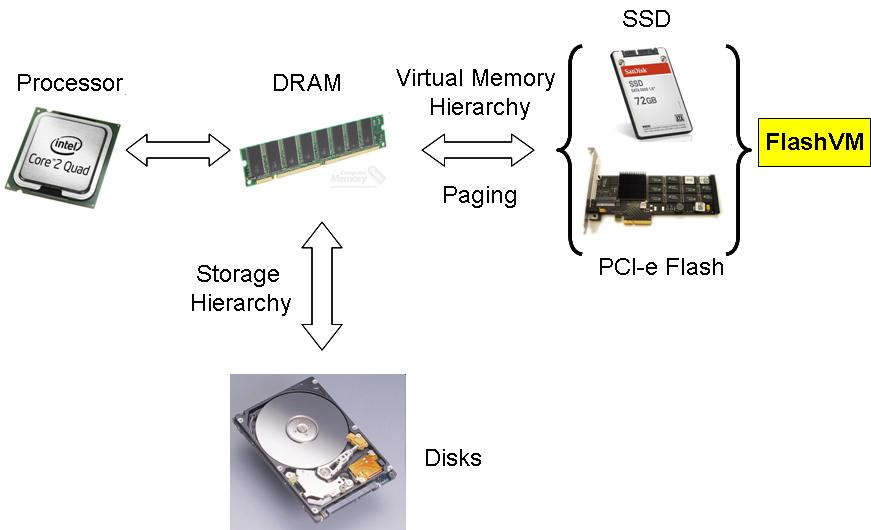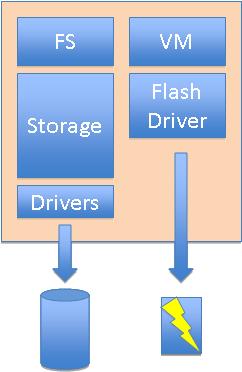Mohit Saxena and Michael M. Swift
USENIX Annual Technical Conference, ATC
Boston, USA, June 2010.


With the decreasing price of flash memory, systems will increasingly use solid-state storage for virtual-memory paging rather than disks. FlashVM is a system architecture and a core virtual memory subsystem built in the Linux kernel that uses dedicated flash for paging.
FlashVM focuses on three major design goals for memory management on flash: high performance, reduced flash wear out for improved reliability, and efficient garbage collection. FlashVM modifies the paging system along code paths for allocating, reading and writing back pages to optimize for the performance characteristics of flash. It also reduces the number of page writes using zero-page sharing and page sampling that prioritize the eviction of clean pages. In addition, we present the first comprehensive description of the usage of the discard command on a real flash device and show two enhancements to provide fast online garbage collection of free VM pages.
Overall, the FlashVM system provides up to 94% reduction in application execution time and is four times more responsive than swapping to disk. Furthermore, it improves reliability by writing up to 93% fewer pages than Linux, and provides a garbage collection mechanism that is up to 10 times faster than Linux with discard support.